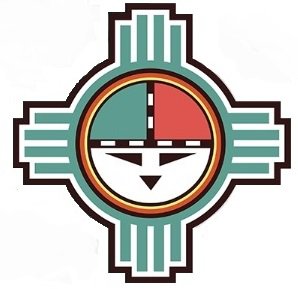
50 Years Ago: Udall: Tax like the Zunis

It’s not very often that federal officials say the Navajo Tribe would do well by watching what another tribe is doing.
Even back in the 1960s, the Navajo Tribe had a reputation of creating programs that were the envy of other tribes and it was not unusual for tribal leaders to come to meet with Navajo Tribal Chairman Raymond Nakai and various officials to see how the Navajos did one thing or another.
But, in this case, Stewart Udall, the secretary of the U.S. Interior Department, was urging the Navajo Tribal Council to look at what the Zuni Tribe was doing and to see if that was feasible to implement on the Navajo Reservation.
What the Zunis did back in the summer of 1967 was something the Navajos had talked about but hadn’t implemented – a taxation system. This would come about some 10 years later.
The Zunis earlier this summer had approved a one percent sales tax on anything purchased on the reservation.
True, the Zuni Pueblo didn’t have a lot of stores but officials did a survey in 1966 and discovered that the pueblo received a lot of tourists every summer and a lot of them purchased Zuni jewelry or other crafts.
The tax was targeted at the tourists since most members of the tribe went to Gallup on weekends to buy their groceries. Trading posts on the reservation weren’t exempt but many Zuni families operated the way they had for generations – relying on credit from the trading posts for goods that would be repaid when the family received income from its crops or livestock. Credit sales were exempt from the tax.
Yet sales of Zuni crafts had been growing steadily over the past few years and officials said they expected the new sales tax to raise thousands of dollars annually for governmental services.
Udall praised the Zuni government for taking the initiative to raise funds internally rather than seeking grants from the federal or state governments.
He said the Zunis, by imposing the tax, has joined a handful of other tribes who have taken the first step to self-sufficiency.
“Zuni officials realize,” Udall said, “that its local government cannot be a potent force unless it is able to carry its fair share of the expenses to provide services to the Zuni people.”
As for the Navajos creating their own tax system, Nakai said he wasn’t interested in putting more of a burden on the Navajo people by requiring them to pay the tax.
Speaking of Nakai, he turned over to the Council this week the name of Harold Mott as the man he wanted to put in as the tribe’s general counsel.
Nakai said he had heard a lot of good things about Mott but, most importantly, he was someone Nakai thought he could work with and not cause problems as did Norman Littell, the former tribal general counsel.
Mott wanted an annual appropriation of $100,000 as compared to the $35,000 a year salary the tribe paid Littell. Mott explained that this money was not only for him but to pay other attorneys he would hire to help him out.
Nakai said he was worth the money but Nakai’s chief political opponent during those days, Samuel Billison, of course had a different take on the subject.
He questioned whether Mott had the legal background for the job, pointing out that he had no background in Indian law.
“He just doesn’t have the background in Indian affairs,” said Billison.
Mott, who won the job by a 38-22 vote by the Council, had offices in Washington, D.C., and had never had an Indian tribe as a client before.
He was one of five candidates who applied for the position, which he would hold until 1971 when he was removed by the new chairman, Peter MacDonald, and replaced with George Vlassis.
Although it was still some six weeks away, tribal officials this week began promoting the upcoming Navajo Tribal Fair in Window Rock, saying that it had the potential to become the biggest in the tribe’s history.
For one thing, the main guest will be U.S. Vice President Hubert Humphrey who will be making his first visit to the reservation.
Tribal officials had hopes of getting Lyndon Baines Johnson, the U. S. president, to come but Johnson said the situation in Vietnam was heating up and he needed to stay in Washington.
Nakai said he was expecting 75,000 to 80,000 people to show up, which would compute to about half of the tribal membership at the time.
While the attendance at the nation’s capital was high every year, everyone knew that whatever figure the tribe released after the fair was probably bogus since it was impossible to actually know how many people attended.
What tribal fair officials did was take the number of people who went through the turnstile and then double that figure to take into consideration all of the free tickets that would be given out by members of the Council and by Nakai over the week.
Thousands – and maybe even more than 10,000 tickets – would be given out free before every fair. Nakai himself would pass them out like jelly beans because it had become something like a status symbol – if you had to actually buy a ticket, it meant you were weren’t important or didn’t know anyone important.
In those days, the fair was expected to make a profit and it never did. It was four days of celebration and people viewed the running of the fair as a good indicator on how well the tribal chairman was doing his job.
[php snipet=3]








 Highway 264,
Highway 264, I-40, WB @ Winslow
I-40, WB @ Winslow